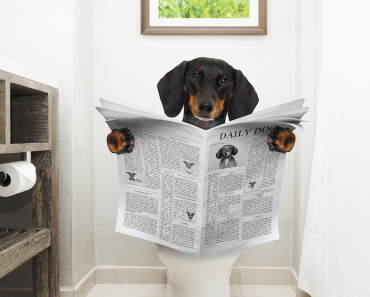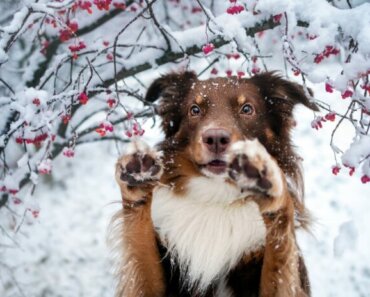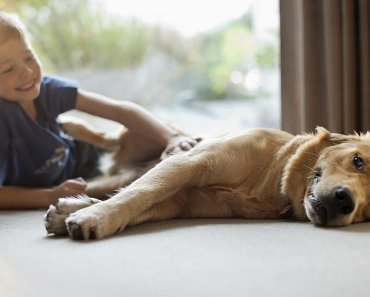Adopting or rescuing a new dog? Here are six ways to prepare your home and family so the newcomer’s arrival goes as smoothly as possible.
Adopting or rescuing a new dog is undeniably exciting. You can’t wait to bring him home, and welcome into your life and heart. But before you do, there are some important preparations to make. You need to ensure your home is as safe and animal-friendly as possible, and that your family knows what to do and how to help in order to make the transition as smooth as possible. Here are six steps to successfully integrating your new best friend into your household.
1. Puppy-proof your house – inside and out
Young dogs and puppies are notorious for getting into mischief, but so are some adult canines! It’s better to make sure your home is free of temptation rather than end up chasing your new dog when he has the remote control in his mouth, or grabs a loaf of bread off the table.
Look at your home through a dog’s point of view. What can he reach, chew, or knock over? Remove these items, pick up your shoes, and shut bedroom, bathroom, and office doors. Many of these measures will only be temporary as you and your dog get used to each other and he eases into his new environment.
Next, take a walk around your yard. If it’s fenced in, check the gate, along with the height and bottom of the fence. Are there any large gaps your dog can get through? Is there anything along the fenceline that he could climb in order to jump over? If he’s a small to medium-sized dog, make sure he can’t wedge his head between any boards or rails. Even if you have a securely fenced-in yard, it’s wise to take your dog outside on a leash instead of allowing him free access to the space, at least until he settles in.
2. Include your family in the preparations
Some dogs adjust to their new lives without missing a beat. Others need some quiet time to acclimatize to the people in the home. Have a family discussion prior to adopting your dog to determine what everyone’s role will be. Who will feed him, do potty duty, and take him for walks? What are some good games you can all play with your new dog? It’s best for everyone to be on the same page right from the start.
3. Go shopping before you bring your new dog home
Do all your shopping for supplies before you bring your dog home. Purchase healthy food and treats, bowls, toys, leashes, a harness, a bed and crate. If you don’t have a local vet, find one; it’s always a good idea to take your new dog to the vet for a meet and greet, along with a physical, within a week of bringing him home.
Take him out often – I would suggest every 30 minutes in the beginning.
4. Start on housetraining right away
If your dog isn’t already housetrained, you need to start as soon as you bring him home. Regardless of his age, treat him as if he’s a small puppy. Keep your eyes on him at all times unless he is in his crate. This way, you will learn to tell when he needs to go outside, while helping to avoid potty accidents in the house.
Take him out often – I would suggest every 30 minutes in the beginning. Keep him on a leash, and when he does his business, praise him and give him a tasty snack. If he’s enjoying his outside time, don’t rush him back indoors right away; allow him to sniff around and enjoy the fresh air.
If you find any housetraining mistakes inside the house, never punish your dog. Simply clean up the mess. If you catch him starting to eliminate inside, don’t reprimand him; just grab the leash and calmly take him outside. When a dog is punished or yelled at for eliminating indoors, he won’t understand that the unwanted behavior is going inside the house; instead, he’ll think that peeing or pooping in front of you is bad. This can lead to even more potty mistakes, along with other undesirable behaviors such as eating poop and refusing to eliminate while on a leash.
5. Keep training fun and positive
Training your new dog in a positive manner is a great way to jumpstart a good relationship. The key is to ensure that you and your dog are having fun. You can teach your dog a variety of behaviors in the comfort of your home, or in your yard. Remember to use reward-based methods. This means giving your dog plenty of praise and treats when he follows a cue, and simply withholding them when he doesn’t, while avoiding any verbal or physical punishment. Dogs that have learned basic behavior cues such as sit, down, stay, and watch are a joy to be around. Dogs that are also taught fun tricks such as bow, circle, hand touch, and more are eager to continue learning and look to their humans for entertainment and guidance.
Have a family discussion prior to adopting your dog to determine what everyone’s role will be.
If you’re unsure about training your new dog on your own, seek the guidance of a positive dog trainer. Group training classes can be beneficial if your dog is comfortable around other people, dogs, and new environments. If he is a bit reserved or unsure, private dog training would be the better option.
6. Remember the power of threes
In dog rescue, we talk about the power of threes. Three days, three weeks, three months. What this means is that rescued dogs tend to undergo three behavior changes during these timeframes. During the first three days of adoption, dogs can be a bit in shock. What is going on? Where am I? Who are these people? At three weeks, they start to open up, and become more relaxed in their new homes. Around the three-month mark, they seem to settle well into their groove and their full personalities start to show.
Adopting or rescuing a dog is a big step, and important for both of you. You are giving him a new lease on life, and he is giving you unconditional love and companionship. Following these steps will help ensure a successful and lifelong bond.




























